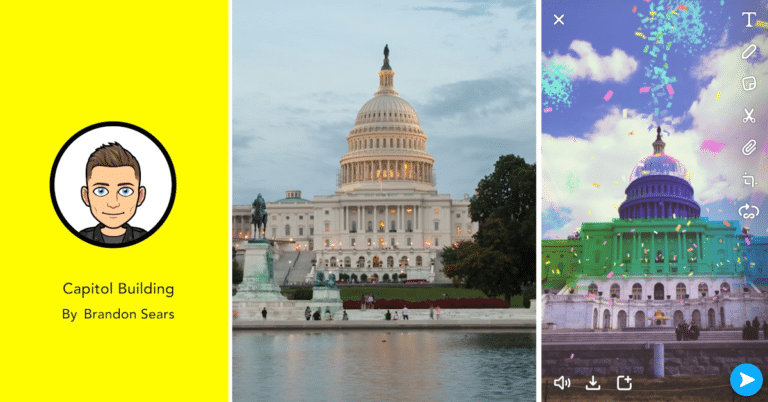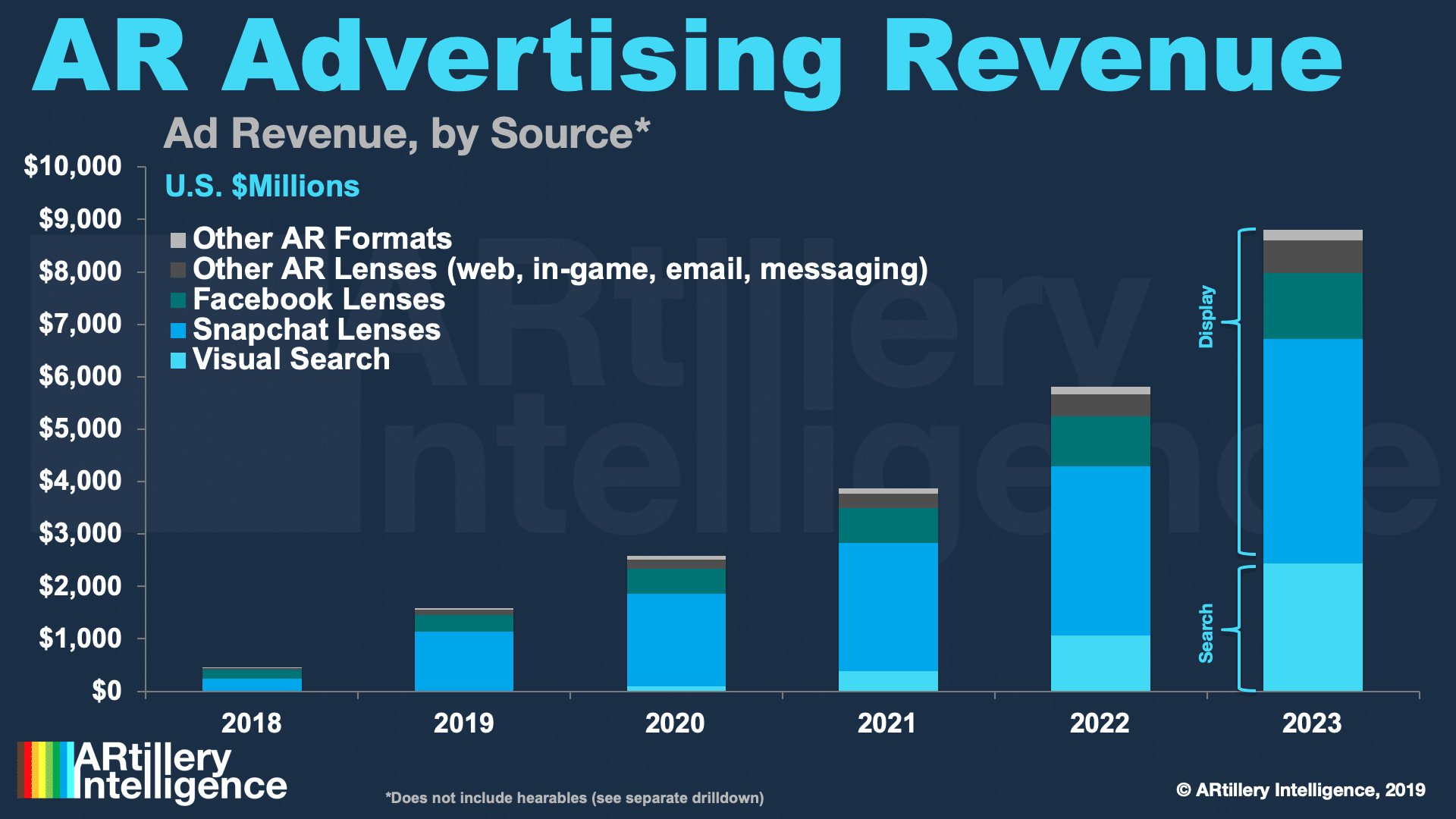
This post is adapted from ARtillery Intelligence’s report, Lessons From AR Revenue Leaders, Part I: Snap. It includes some of its data and takeaways. More can be previewed here and subscribe for the full report.
A lot can be learned from consumer AR’s early leaders. What are they doing right? How are they engaging users? And how are they making money? These are key questions in AR’s early stages, as there’s no standardized playbook quite yet. This results in lots of experimentation.
This exercise includes pinpointing fitting AR use cases, as well as more granular strategies around user experience (UX). What types of AR interactions resonate with consumers? And what best practices are being standardized for experience and interface design?
Equally important is the question of AR monetization and revenue models. Just as user experience is being refined, questions over what consumers will and won’t pay for are likewise being discovered. The same goes for brand spending behavior for sponsored AR experiences.
Snap is one company leading the way with all of the above. It has built a real revenue-generating business around AR lenses, including brand-sponsored experiences. A lot of this comes down to a virtuous cycle: user engagement attracts lens developers, more users… then advertisers.
To get there, Snapchat has established three pillars in its AR strategy: Access, Adoption and Content. After covering access and adoption, it’s time to round out the series with Snap’s third pillar. Content is king in AR, just as it has been for years in other flavors of media and technology.

Pillar 3: Content
Beyond making AR accessible (pilar I) and creating use cases that drive adoption (pillar II), the actual content that populates those experiences is likewise critical. This is Snapchat’s third pillar for AR, including the actual AR animations and lenses that are the centerpiece of the UX.
Though we all know the idiom that content is king, it’s a lot easier said than done to actually succeed with content. The keys to doing it right involve both quality and quantity. Snap has achieved the former through human-relevance and the latter by opening up Lens Studio.
We’ll tackle each, starting with relevance. Snap has learned through large-scale AR distribution that people are vain. It doesn’t get more relevant than peoples’ own faces. That drives front-facing camera activations, while rear-facing activations include the places that people associate with.
The latter brings in Snapchat’s Landmarkers. Here, the strategy is to zero in on a few high-traffic destinations for AR animations, rather than mapping the world. This gives it a focused and foundational toolset for high-quality tracking and AR effects that developers can build around.
“Location-as-a-signal, and your physical world, is obviously an area that a lot of people are investing a lot of energy into,” said Snap’s Carolina Arguelles at AWE EU. “Our first step in mapping the world – so that the world can actually have computing overlaid on it everywhere – is Landmarkers… It’s just the beginning of how we can start to map the world.”

Quality + Scale
Beyond quality and relevance, Snapchat engenders quantity and scale by opening up Lens Studio to developers. This populates lens content libraries, which seed and fuel user demand. Resulting usage in turn incentivizes further lens creation — the virtuous cycle examined earlier.
“How do you build scale? We really believe that you need to have an open platform and an open ecosystem where different types of creators, developers, and technologists can contribute, said Arguelles. “How do you build an ecosystem where you have enough content to serve? How do you make things sticky, not just interesting the first time around? We do that through Lens Studio.”
Another key aspect of content is its distribution. To keep Lens Studio creators incentivized, Snap gives them a few options for reaching large audiences. This includes organic distribution (a.k.a. “community lenses”) and sponsored distribution (for brand advertisers).
The former gives smaller developers a platform, profile links for their lenses to share with friends. There’s also the chance of getting found in Snapchat search results. Or for popular lenses, there’s the user-facing lens discovery tool, Lens Explorer, where they can be discovered organically.
With front-facing AR, it’s hard to go wrong because peoples’ faces are inherently relevant as mentioned. But with rear-facing AR, targeting strategies (paid) can help lenses get to the right audiences. They therefore gain relevance because the right content is matched with the right user.
“The number one thing that works is relevancy,” said Arguelles. “What’s important with this is that you’re targeting your experiences to people that have those interests. How you think about delivering good content is all about what’s in the content but also who you’re talking to.”
Check out the full report here.
For deeper XR data and intelligence, join ARtillery PRO and subscribe to the free AR Insider Weekly newsletter.
Disclosure: AR Insider has no financial stake in the companies mentioned in this post, nor received payment for its production. Disclosure and ethics policy can be seen here.
